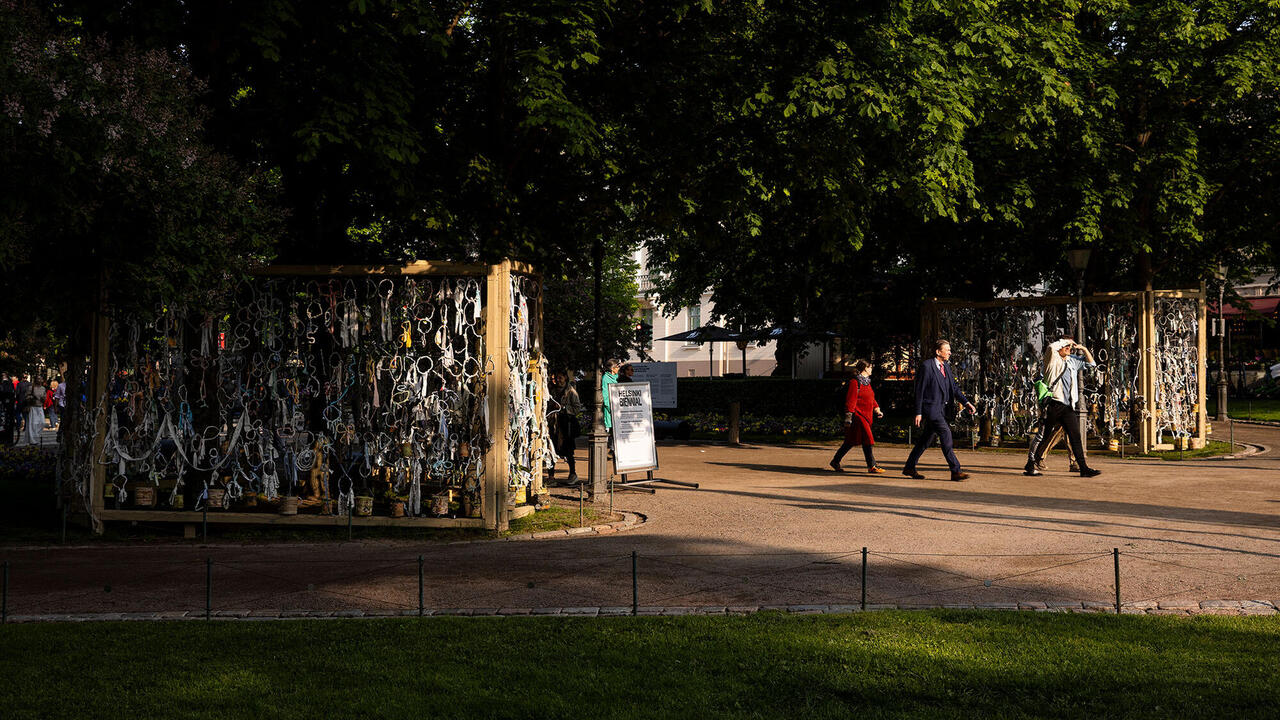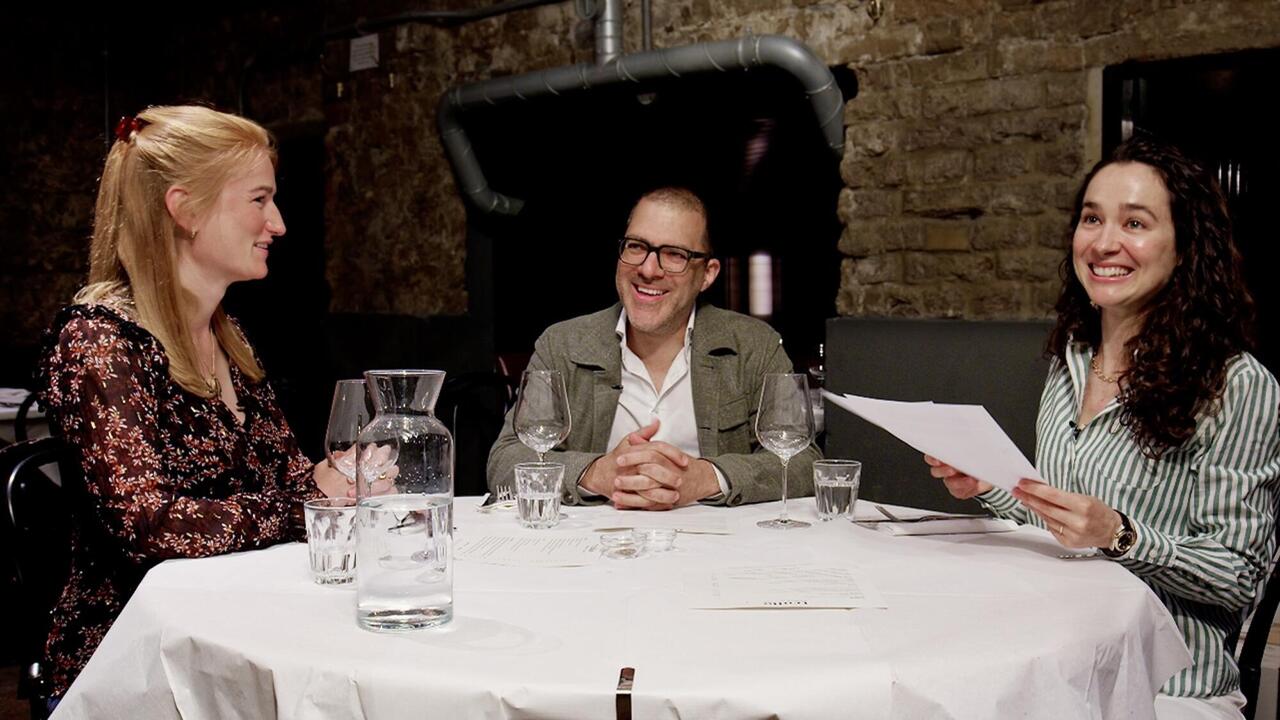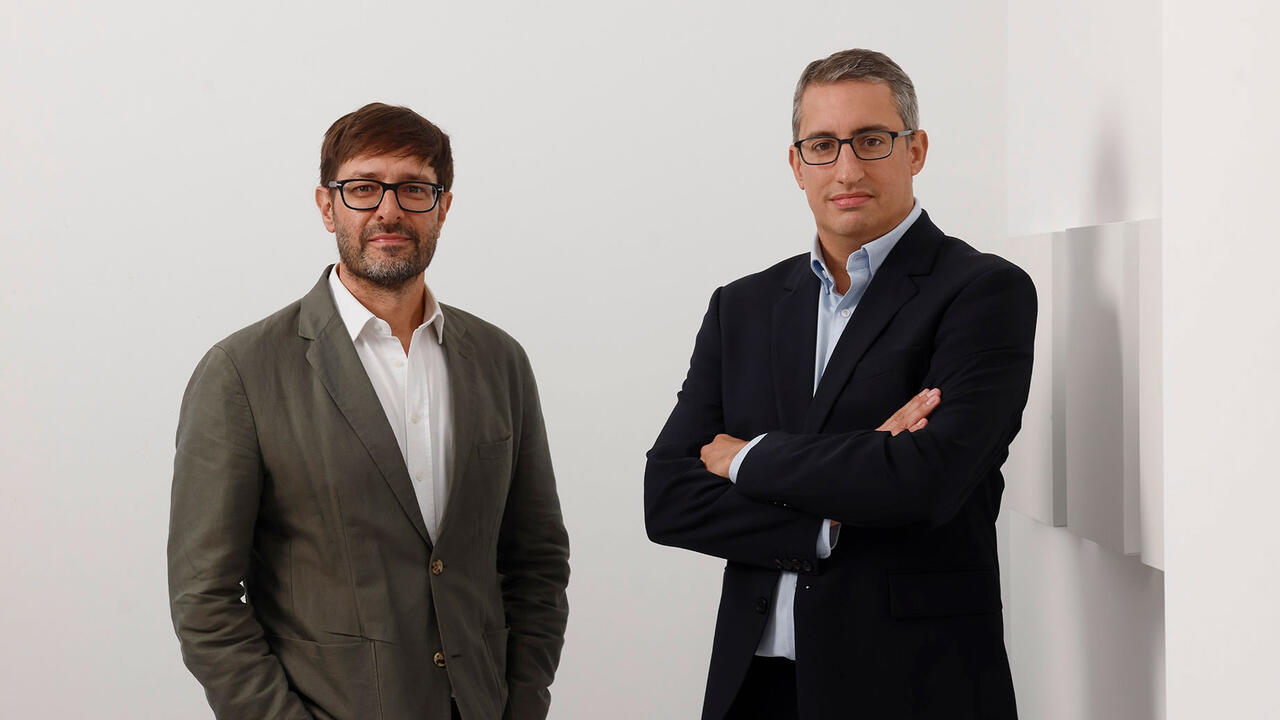Melodic Thinking
On the occasion of his retrospective in Karlsruhe, Werner Büttner talks to Jan Verwoert and Jörg Heiser about polemics and punchlines in more than three decades of work
On the occasion of his retrospective in Karlsruhe, Werner Büttner talks to Jan Verwoert and Jörg Heiser about polemics and punchlines in more than three decades of work

Jan Verwoert Walking around your retrospective Gemeine Wahrheiten (Base Truths) in Karlsruhe, one feels the weight of more than three decades – West Germany, world politics, private life … How have the passing times outside your door related to the rhythm of things in your work?
Werner Büttner I once wrote: ‘the artist is a sieve, sifting his environment. Information nuggets of precisely the required size get stuck in the sieve. Now he can work.’ According to this description, it’s a process of methodical intuition – an obvious contradiction in terms. But it has never been my ambition to stumble through life free of contradictions. Such drudgery can be left to scientists and lawyers. People like us can indulge equally in truth and its base opposite. With the help of methodical intuition, I make pictures of the way I experience life. Many people only make pictures of the way they experience art. An error. Who could possibly be interested in that? For 40,000 years, humans have been describing and making pictures of the way they experience life. They tell of the knowledge, passions and errors of their times. They tell of things that have touched them in a meaningful way. Unlike science, whose results age and are discarded on a day-to-day basis, experience of life, if well executed, does not age. It is kept and it helps new sentient beings to find their bearings in the chaos of external phenomena.
JV What triggers a response? How do you decide to make one thing into a single large painting, and something else into a series of drawings on paper?
WB Once my methodical intuition has revealed, denounced, betrayed a phenomenon to me that can be used in a coherent and meaningful way, I usually know the correct material straight away, the material called for by this subject, theme, idea. And in most cases, the original idea includes the appropriate size for the work. Bombastic or modest, there are hundreds of reasons for the one or the other, and intuition knows them all. And just to sow further confusion, one more little thing: I’m not a methodical thinker, I’m a melodic thinker.

Kinderwagen_, 1987, Oil on canvas (courtesy: Deichtorhallen Hamburg / Sammlung Falckenberg; photograph: Egbert Haneke)
JV How do these melodies work? Some are played just once, as in the painting Stilleben mit sibirischem Kinderwagen (Still life with Siberian pram) from 1987: boldly rendered in oil, olive-green, otherwise black and white. While other melodies are modulated, sometimes over many years. The series of drawings Schrecken der Demokratie (Disasters of Democracy) began in 1979 and ended in 1999. How did you come to frame the series in advance with a title, a format, a stamp? What causes your intuition to say: right, that’s it, last drawing, end of series?

1981–6, Mixed media on paper (courtesy: Sammlung Grässlin, St. Georgen; photograph: ONUK)
WB The series ended with the disappearance of the ‘Desastres de la Democratia’ stamp in the year of our Lord 1999. And as you can read in a text by my friend Harald Falckenberg, I’m arguing that I came to light exactly 1999 years after the murder of Caesar. My friend Falckenberg contests this. But even a brilliant capitalist gets his sums wrong once in a while. The stamp was neither lost nor misplaced. Neither was it stolen, set alight, or crumbled by my own hand. It disappeared. Objects and people do this. That fact must be accepted, like so many things. One does not welcome it, but as a side effect of one’s ‘thrownness’, it must be allowed to pass.

Mixed media on income tax form (courtesy: the artist; photograph: ONUK)
Jörg Heiser Could you nonetheless try to outline some of the hundreds of reasons for choosing one approach over another? Take an early work like the baby birds squawking for food in their nest, drawn on an income tax form from 1975 (Erste Versuche, First Attempts 1980), and then a large oil painting of cavalrymen dashing away, Die Avantgarde von Hinten (The avant-garde from behind, 2011). Tender beginnings, late conclusions. For all the obvious differences, is there a ‘meta-method’ at work here, constantly scanning your own oeuvre for things not yet said and things not yet shown?

von hinten_, 2011, Oil on canvas, (courtesy: the artist; photograph: Egbert Haneke)
WB What do you want – ideology, tradition, tears? René Magritte undeniably led a stuffy, conventional existence in Brussels: Never a drop of oil paint on the carpet? No one denies this either. Throughout his lousy life, he had to say, ‘no, I don’t paint dreams.’ Read his 800-page self-justification. He said what was not said, he pointed to what was not shown.
JH Okay, let’s try another approach. In art and in the world, irony, parody, the grotesque, satirical techniques as a whole have their history and their pioneers. Where do you see yourself in relation to this history – leaving aside the major figures you’ve mentioned in the past, Aristophanes, Erasmus, Laurence Sterne? And what about the present with its talk of ‘post-irony’ and its unease with the distancing gesture of irony?
WB I’m suspicious of the word ‘post’. Too many concepts have tried to adorn themselves with it as harbingers of the end of time. People still live and people still die. Cowardice, stupidity and bad art live on in high style. There can be no diagnosis of a ‘post’ or a ‘pre’. There is only perpetual misconception. Irony is the technique for holding the world in all its sordidness at arm’s length. No ‘post’ or ‘pre’ here either. Each individual stands alone, in his own time, in front of his own pile of shit and must decide whether to stir it up, ignore it, or swallow it down. The names you mention are good names. Aristophanes crowned stupidity. Erasmus crowned folly. And Sterne crowned the perpetuity of stupidity and folly. After that, my contributions were just sweet nothings.
JV You once wrote: ‘Reality must be subjected to counter-viewpoints’. Is this a call to arms? Can irony – as a technique in the struggle with the world’s sordidness – be passed on and taught? The art academy as a technical university for ways of coping with life?
WB Many of my favourite colleagues and teachers from our cultural past have taken part in the project of ‘counter-viewpoints’. Think of James Ensor and his method of masterfully denouncing the human and material trumpery of Belgium. Or think of Kafka, Joyce, Beckett: that wasn’t about enduring reality, as a well-behaved accomplice. That was resistance, counter-attack, sometimes even vendetta. The list of counter-viewers is long, while that of the accomplices of what merely exists is simply never-ending. And yes, of course this battle can be taught and learned. We are all born empty, with nothing but a few random genes and obsolete instincts. Only a few have the misfortune to be born rich. They are stuffed full in advance and have to watch over and feed off their inheritance forever. But the rest of us are empty and free and can piece ourselves together out of the ruins and works of the past. We can try, with the help of our cultural heritage, to become human, thus avoiding blunted idiotic existence. There’s plenty of material for pedagogical sermons. Antiquity’s three demands alone – ‘learn to live, learn to read, learn to die’ – are enough to keep students occupied to bachelor level, if not longer.
JH How ruthless must or may this urge towards counter-viewpoints and pedagogical sermons be? At the risk of self-righteousness, where does it leave the welcoming, sociable cheerfulness that is present as a gesture in your punchlines and pictures, in the act of looking and laughing together?
WB There are few things I despise more than the calculated seriousness so widely displayed in the art world. Seriousness is the mask of the frivolous. It wants to force its audience into virtual consternation or reverence. It’s not even a stylistic device, it’s bluff and fraud and, what’s more, it’s meaningless. Meaningless because it can only lead to submission or a hasty retreat. Dialogue or negotiation are not on the menu. Cheerfulness is a different kind of mask. It aims to seduce, not to inflict violence. It shows the tragic side of a phenomenon with a laugh, and without maliciously suggesting a solution. It is a leader that detests steering. It shows solidarity, resists ideology, reviles torture and is sustained by its inherent melancholy – the exact opposite of frivolity, then. This cheerfulness of mine sometimes expresses itself in blanket denigrations of unwitting parties. As in the foreword to my book Schrecken der Demokratie (1983): ‘One can thus be glad when, like a rapturous revelation, the following words rise from one’s pictures: I’m an arsehole, but you are arseholes, too.’
JH An exhibition poster of yours from 1985 says, ‘All I want is a warm spot from which to gun people down for a good cause.’ Does this not constitute a paradoxical linking of both impulses – the counter-viewing polemical and the cheerful?
WB Above all, the ‘gun people down’ quote is a denunciation of any self-righteous ideology that believes it is entitled to murder. I avoid the charge of self-righteousness by claiming to be such a murderous ideologue myself. And the very mention of a ‘warm spot’ undermines the statement and acquits me. But the ‘warm spot’ also denounces any search for ‘warm spots’ by self-righteous, sub-sophisticated creatures with human faces. And finally, the murderous ideology is rendered truly silly by the connection with ‘warm spot’. The whole sentence, then, is a perfidious, multi-layered paradox. Life itself appeared in the world as a paradox and it is logical to respond to life with more paradoxes. Jean Améry, who killed himself, defined the life of the human monad as the construction of a house that is promptly demolished on its completion. So if life resorts to the weapon of paradox, anyone not wishing to sidestep the duel can only resort to the same weapon, for he will die by the sword of paradox in any case. Which brings us to absurdity in the third degree, if I have been keeping count correctly.
JV In his introduction to the Gemeine Wahrheiten catalogue, Peter Weibel describes a central aspect of your work: you liberate commentary from the function of mere accessory to the art itself – supplementary exegesis – and turn it into an artistic medium in its own right. Every work as a comment, because ‘truth is work’. This takes the wind out of the sails of the commentary trade and traditional art interpretation. This tactic, Weibel argues, aims – and is he quoting you here? – to leave the opponent ‘no room for interpretation’. Who are these opponents? The representatives of false seriousness? Or people who ask questions like this one?
WB Leaving ‘no room for interpretation’ is a quote from Diedrich Diederichsen, from a text he wrote about us (Martin Kippenberger, Albert Oehlen and myself), published in the early 1980s. Diederichsen dared and still dares to pass judgement. Many broadsheet critics, on the other hand, presumably shocked by art’s triumphant progress, have become cautious and rudely withhold judgement. Even in the face of hair-raising aberrations. Annoyingly, one must assume that the American maxim of ‘you can’t argue with success’ has prevailed. Just as the American maxim of, ‘an exhibition must be able to be viewed and understood in seven minutes’ has won out. Otherwise the Berlin Gallery Weekend would be an impossible challenge. In a paradoxical and erratic world, one can only try to become as self-sufficient as possible. Avoiding dependencies, loving and hating as little as possible, and training the imperturbability of the spirit. Autarky and ataraxia. Providing commentary as part of the work, thus gently influencing interpretation, is a form of autarky. But it is also a form of generosity towards the impoverished ‘commentary trade’. I also think there are too many non-aggression pacts in the intellectual sphere.
JV The harsh tone of disputes over art’s meaning or lack of meaning in the 1980s has in recent times given way to a new friendliness and familiarity. In contrast to this, how do you think cultivated antagonism might look today?
WB A good opponent is known to promote one’s growth as a person. Which is probably why they are so rare and fleeting. My students regularly ask about possible opponents. But in a time when disputes are denied or euphemized, it’s hard to confidently identify a target that’s worth attacking. I can only point to the age-old poster promoting a war on stupidity and say: the enemy is still at large! So far, each generation has failed to behead this hydra. It is quite astonishing how much stupidity this paradoxical life nourishes and cherishes and allows to reproduce. One almost might think it’s the survival of the stupid.
Translated by Nicholas Grindell















